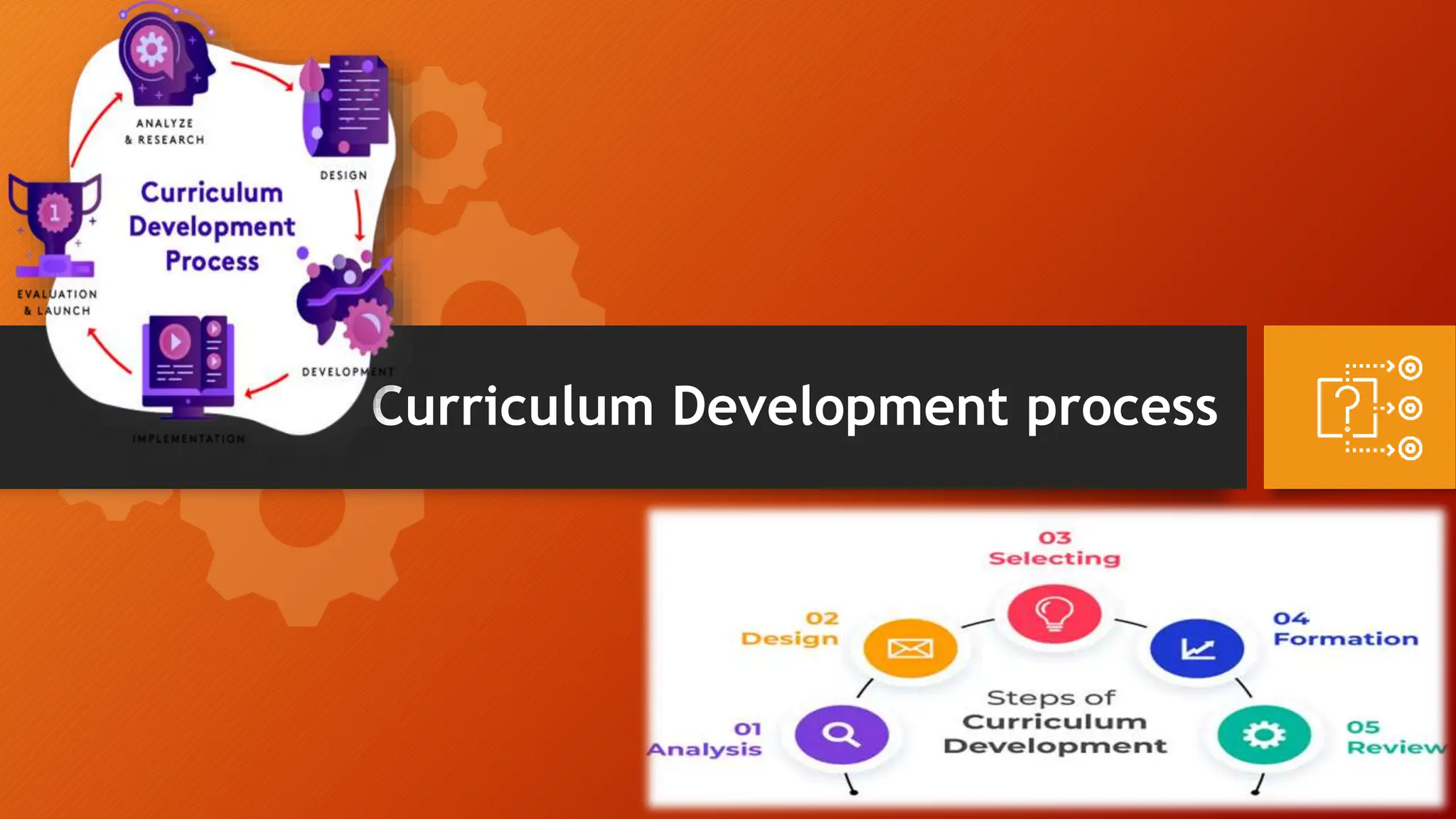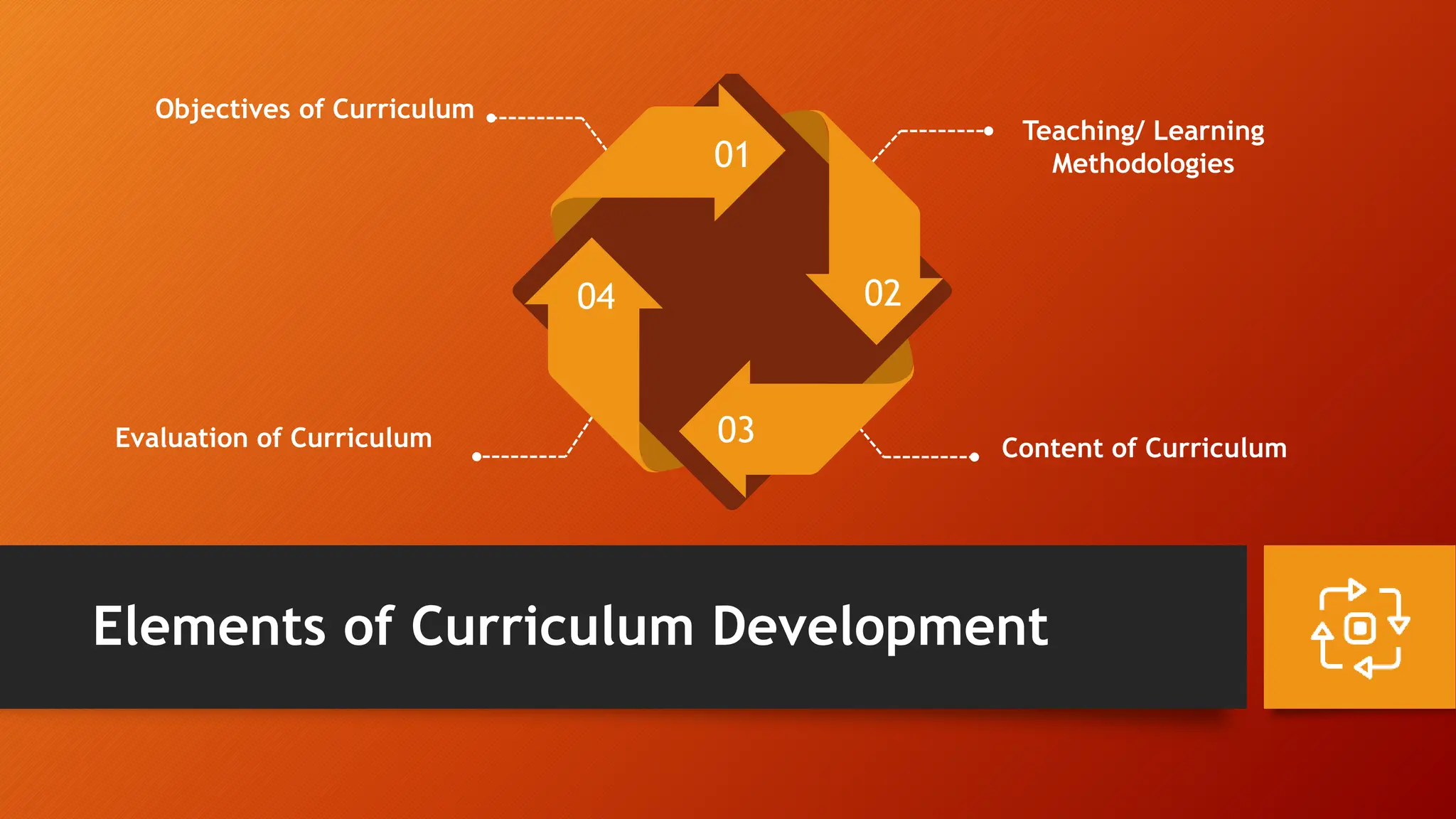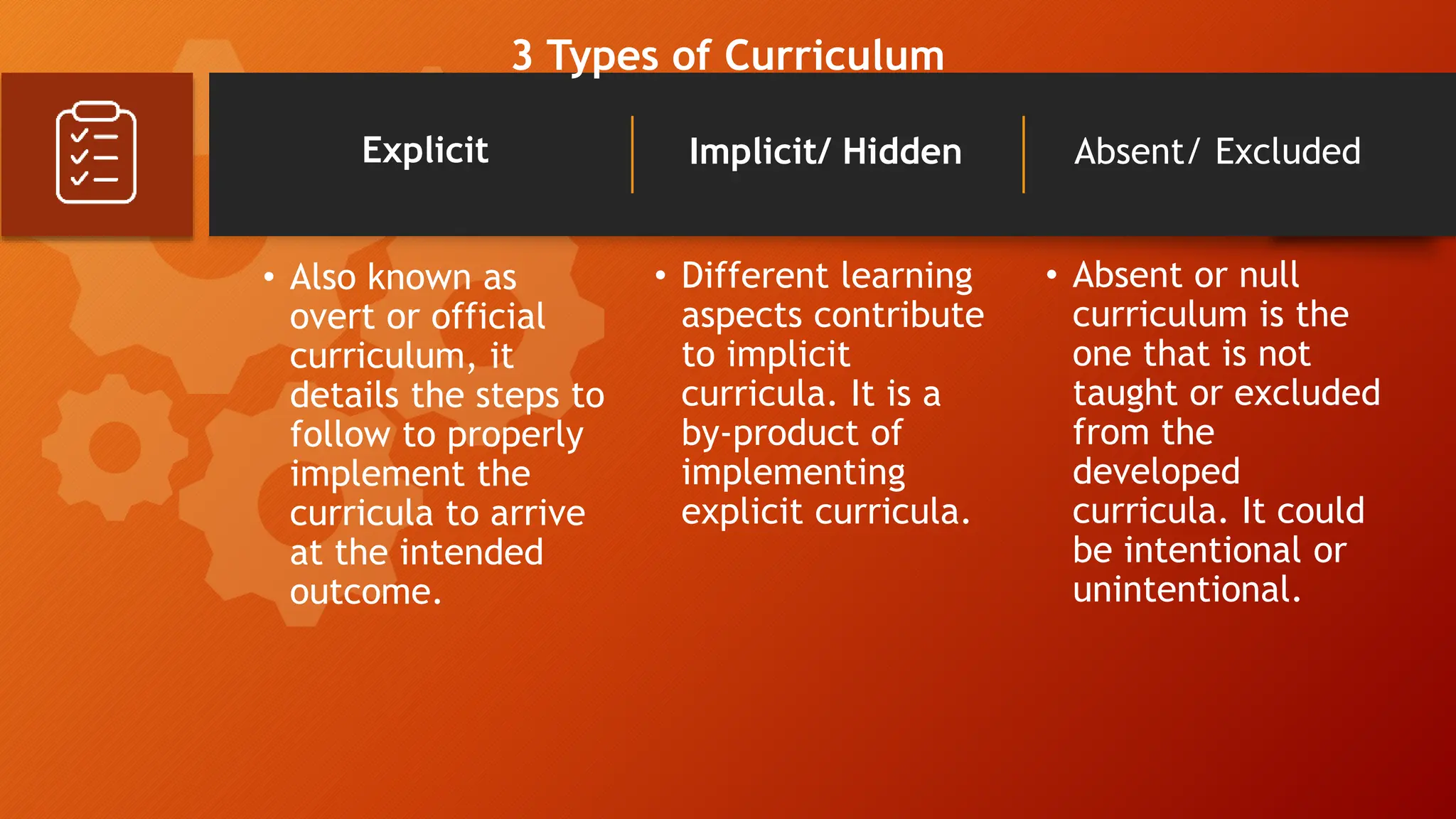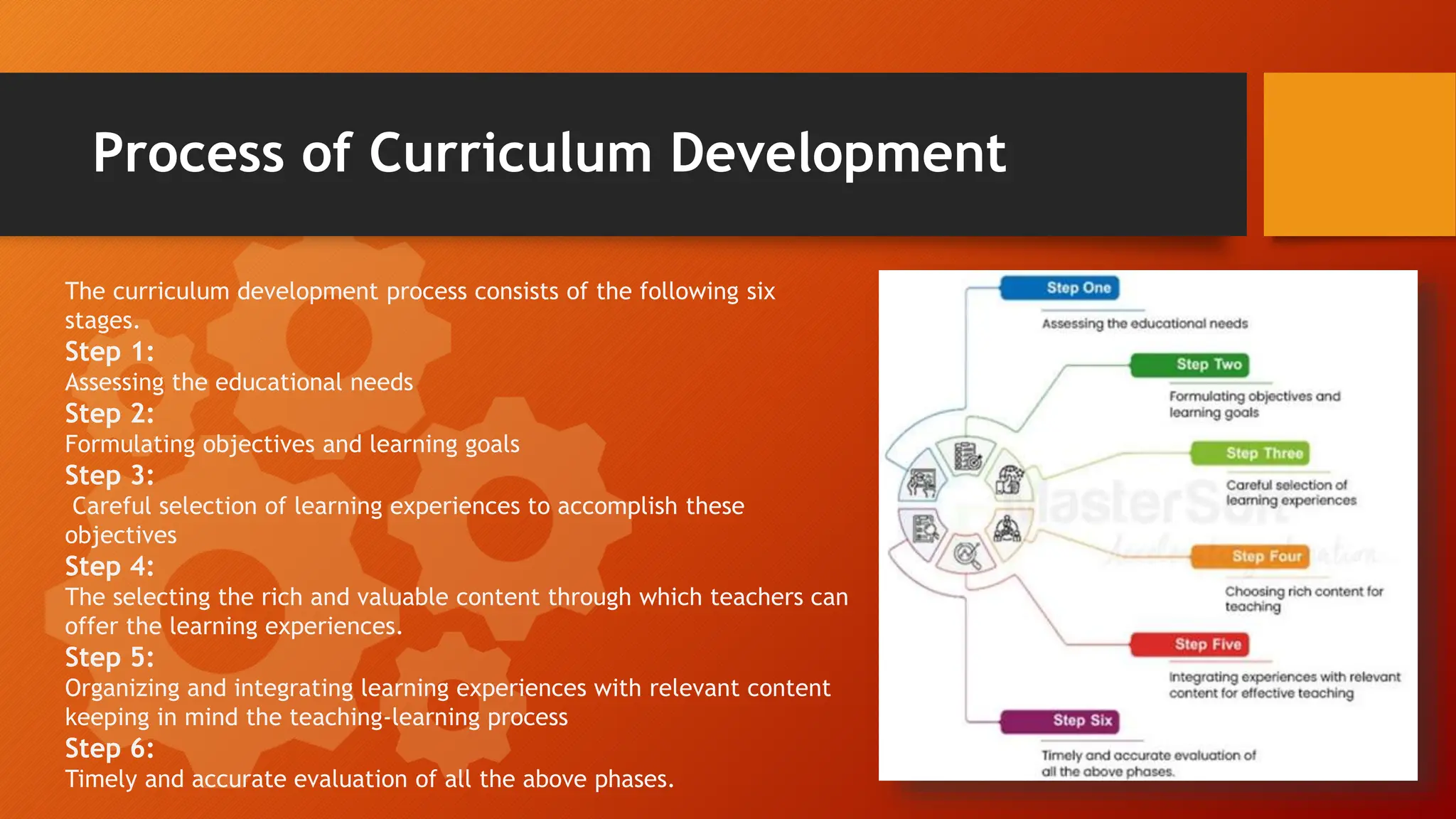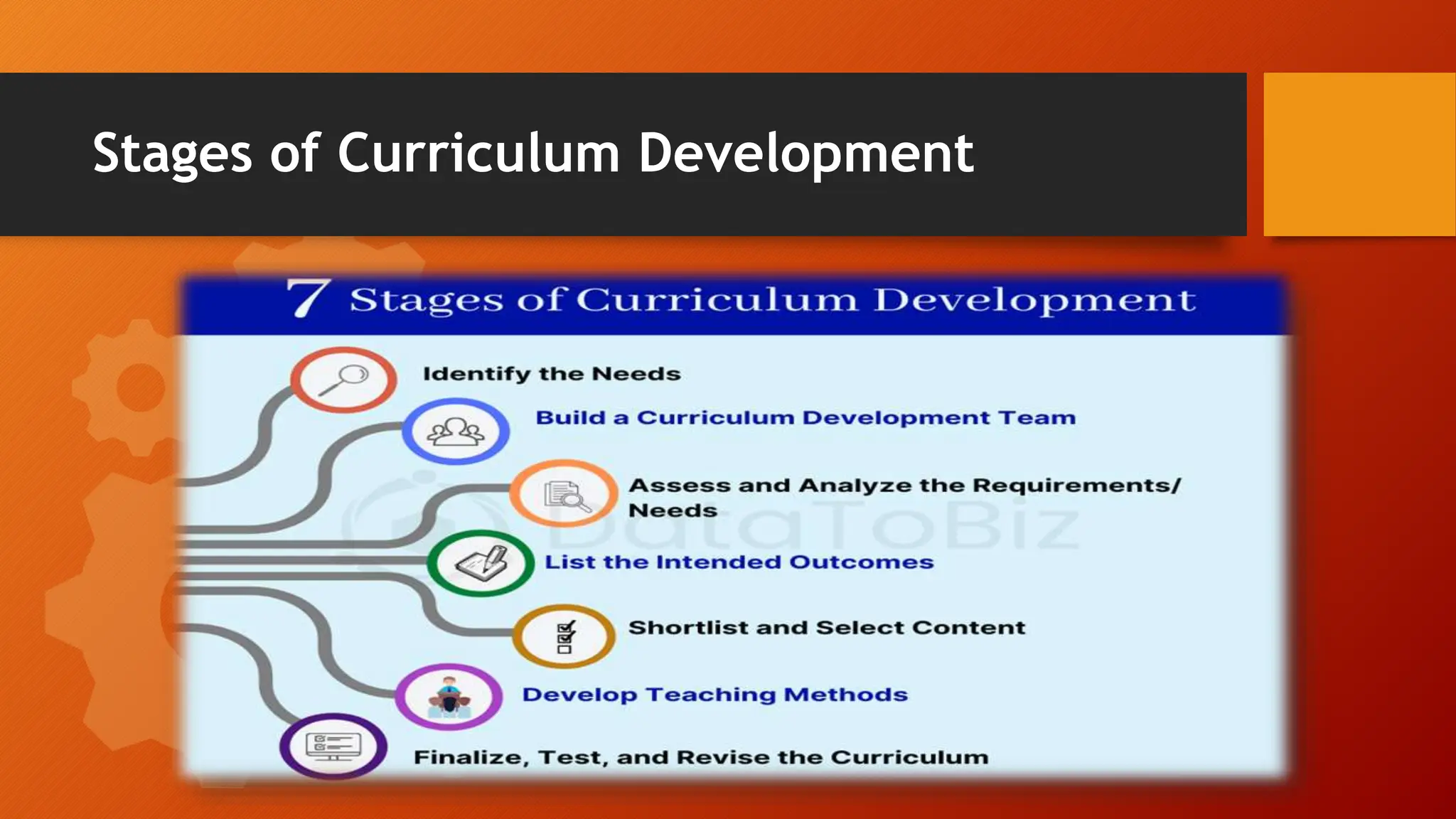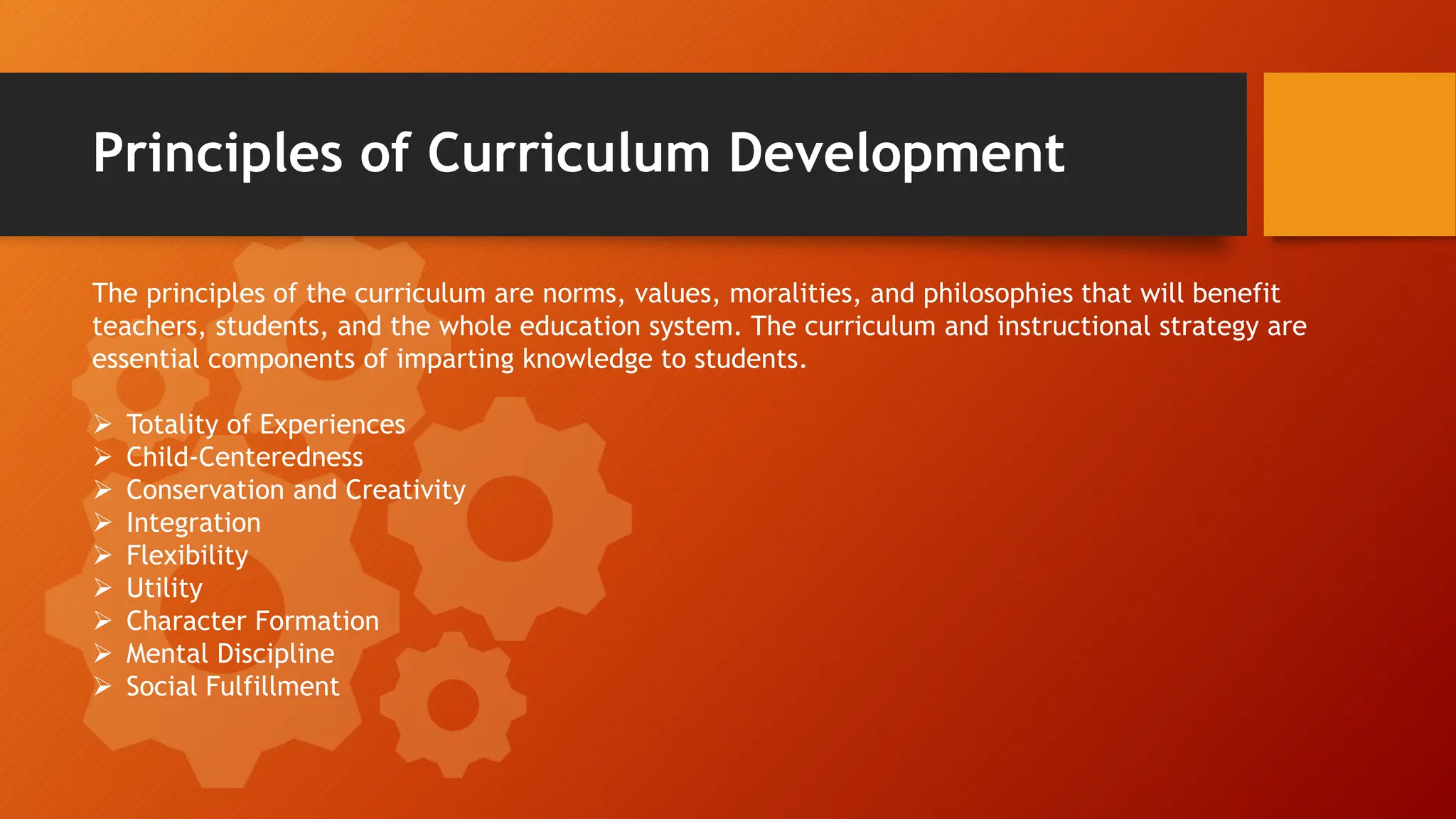The document discusses the curriculum development process in educational institutions, emphasizing its dynamic nature that requires continuous improvement to meet educational standards. It outlines various curriculum strategies, types, and stages involved in developing effective curricula, including learner-centered, subject-centered, and problem-centered designs. Additionally, it offers tips for curriculum creators to focus on learners’ needs and incorporate technology while ensuring proper evaluation and feedback mechanisms.

